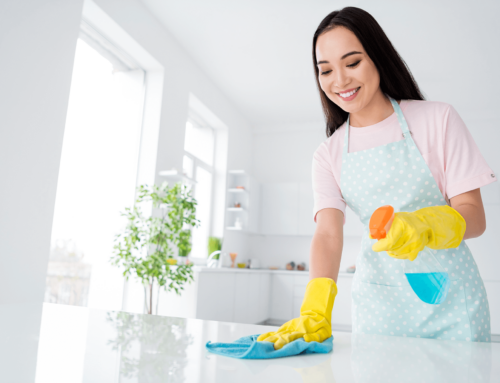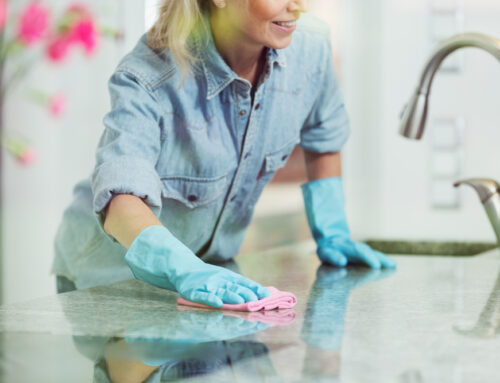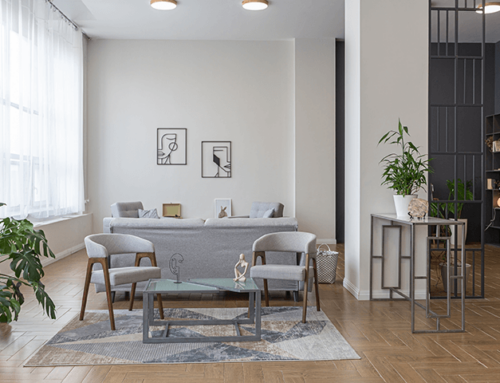
Preventing Common Cleaning Problems in High-Humidity Homes
High humidity can create numerous challenges in maintaining a clean and healthy home environment. For residents of Yorktown, VA, where humidity levels are often high, addressing these issues is crucial to ensure comfort and safety. This article explores effective strategies for preventing and managing common cleaning problems associated with high humidity, drawing on the expertise of Paragon Cleaning to offer practical solutions.
Understanding the Impact of High Humidity on Cleaning
High humidity can create several problems that complicate cleaning efforts and affect the overall cleanliness and hygiene of a home. Some of the most common issues include:
- Mold and Mildew Growth: Excess moisture provides an ideal environment for mold and mildew, which can damage surfaces and affect indoor air quality. These fungi thrive in dark, damp spaces, making high-humidity homes particularly susceptible.
- Dust Mites: High humidity increases dust mite populations, which can trigger allergies and asthma. These microscopic creatures flourish in warm, moist conditions, commonly found in bedding and upholstered furniture.
- Odors: Moisture can lead to musty odors, especially in poorly ventilated areas. Such smells are often caused by microbial growth and accumulated moisture in carpets, drapes, and even walls.
- Warping and Rot: Wooden surfaces and furniture are susceptible to warping and rot in humid conditions. Persistent moisture can cause wood to swell, leading to structural damage over time.
Understanding these issues is the first step toward effectively managing them. The following sections will discuss specific cleaning challenges and provide solutions to help maintain a healthy and comfortable home environment.
Mold and Mildew: Prevention and Removal
Causes and Identification
Mold and mildew thrive in damp, humid environments, making bathrooms, kitchens, and basements common problem areas. They can appear as black, white, or greenish spots on surfaces and emit a musty odor. Identifying mold early is crucial, as it can cause respiratory issues and other health problems if left unchecked.
Mold grows from tiny spores, which are always present in the air. These spores land on wet surfaces and begin to colonize if not promptly removed. Mildew, a form of mold, typically appears as a flat, powdery fungus on surfaces.
Prevention Strategies
Preventing mold and mildew requires diligent attention to moisture control and hygiene. Here are some strategies to keep your home mold-free:
- Improve Ventilation: Ensure proper airflow by using exhaust fans in bathrooms and kitchens. Open windows when possible to allow fresh air circulation, which helps to dry out areas quickly.
- Use Dehumidifiers: Dehumidifiers can help maintain optimal indoor humidity levels. By extracting moisture from the air, they prevent mold spores from settling and growing on surfaces.
- Regular Cleaning: Clean surfaces regularly with mold-inhibiting solutions, such as vinegar or hydrogen peroxide, to prevent mold growth. Consider using antimicrobial products in areas prone to moisture.
- Fix Leaks Promptly: Repair any leaks in plumbing or roofing to prevent water accumulation and mold development. A small leak can lead to significant mold issues if not addressed quickly.
- Insulate Pipes: Insulate cold water pipes to prevent condensation, which can create a breeding ground for mold in hidden areas.
- Keep Gutters Clean: Ensure gutters are clear and directing water away from the home to avoid moisture seepage into walls and foundations.
Effective Mold Removal Techniques
If mold appears despite preventive measures, prompt and thorough removal is necessary. Follow these steps for effective mold cleanup:
- Protective Gear: Wear gloves, goggles, and a mask to protect yourself from mold spores during cleaning. Mold can cause allergic reactions and respiratory issues, so protection is essential.
- Use the Right Products: Use commercial mold removers or a homemade solution of bleach mixed with water. Apply to the affected area and scrub with a brush. Always follow safety instructions on cleaning products.
- Ensure Thorough Drying: After cleaning, ensure the area is thoroughly dried to prevent mold from returning. Use fans or dehumidifiers to speed up the drying process.
- Dispose of Contaminated Materials: If mold has penetrated porous materials like carpets or ceiling tiles, these may need to be removed and replaced to ensure complete eradication.
Managing Dust Mites
Understanding Dust Mites
Dust mites are microscopic pests that thrive in humid environments, feeding on dead skin cells. They are common in bedding, carpets, and upholstered furniture, contributing to indoor allergens and respiratory issues.
Dust mites are invisible to the naked eye but can have a significant impact on health. They produce allergens that can cause sneezing, coughing, and other allergic reactions in sensitive individuals.
Prevention and Control
Controlling dust mites involves reducing humidity and maintaining cleanliness in areas where mites tend to accumulate:
- Frequent Washing: Wash bedding, curtains, and soft furnishings regularly in hot water to kill dust mites. Hot water is essential for effectively removing these pests.
- Use Allergen-Proof Covers: Encase mattresses and pillows in allergen-proof covers to reduce dust mite exposure. These covers create a barrier between you and the mites, reducing allergen exposure.
- Vacuum Regularly: Use a vacuum cleaner with a HEPA filter to effectively remove dust mites from carpets and upholstery. Regular vacuuming minimizes the number of allergens in the home.
- Reduce Humidity: Keeping humidity levels low can help control dust mite populations. Use a dehumidifier to maintain a dry environment, particularly in bedrooms and living areas.
- Minimize Clutter: Dust mites thrive in cluttered spaces. Keep your home organized and reduce the number of knick-knacks and soft furnishings where dust can accumulate.
- Use Hardwood or Tile Flooring: Consider replacing carpets with hardwood or tile flooring, which do not harbor dust mites as readily as carpets do.
Addressing Odors
Causes of Musty Odors
High humidity can lead to musty odors, often caused by mold, mildew, or accumulated moisture in fabrics and materials. These odors can permeate a home and create an unpleasant atmosphere, especially in closed spaces like closets or basements.
Odors in high-humidity homes often stem from poor ventilation and stagnant air. Identifying the source of the smell is the first step in addressing the problem effectively.
Solutions for Freshening Up
To eliminate musty odors and keep your home smelling fresh, consider these solutions:
- Improve Air Circulation: Use fans and open windows to enhance air circulation and reduce moisture buildup. Proper ventilation prevents stale air and helps to eliminate odors naturally.
- Use Natural Deodorizers: Baking soda, vinegar, and activated charcoal are natural deodorizers that can help neutralize odors. Place bowls of these substances in affected areas to absorb smells.
- Regular Cleaning: Clean carpets and upholstery regularly, and consider professional deep cleaning services for persistent odors. Fabrics can trap odors, so regular cleaning helps maintain freshness.
- Dry Out Problem Areas: Use a dehumidifier or silica gel packets in closets and other enclosed spaces to absorb excess moisture. Keeping these areas dry prevents mold growth and odor development.
- Inspect for Hidden Mold: Sometimes odors persist due to hidden mold behind walls or under floors. If a musty smell lingers, investigate further to identify and remove any mold.
- Use Essential Oils: Add a few drops of essential oils like lavender or eucalyptus to cleaning solutions for a pleasant fragrance. Essential oils can also be used in diffusers to improve air quality.
Preventing Warping and Rot
Challenges with Wooden Surfaces
Wooden surfaces and furniture are vulnerable to warping and rot in high humidity, which can lead to costly repairs or replacements. Moisture causes wood fibers to swell, leading to deformation and structural weakness.
Wood is a natural material that responds to changes in humidity by expanding and contracting. High humidity levels exacerbate these effects, causing warping and potential rot if not managed properly.
Protective Measures
To protect wooden surfaces from the damaging effects of humidity, consider these measures:
- Seal Wood Properly: Use waterproof sealants or varnishes on wooden furniture and surfaces to protect against moisture. Regularly reseal wood to maintain its integrity and appearance.
- Maintain Even Humidity Levels: Use a humidifier in the winter and a dehumidifier in the summer to maintain consistent humidity levels, preventing wood from expanding or contracting excessively.
- Regular Inspection: Check for signs of warping or rot regularly and address issues promptly to prevent further damage. Look for soft spots, discoloration, or structural changes in wooden items.
- Keep Furniture Elevated: Use risers to keep wooden furniture elevated above the floor, reducing the risk of moisture damage from spills or leaks.
- Use Rugs or Mats: Place rugs or mats under furniture to create a barrier between wood and humid air, especially in areas prone to moisture.
- Control Indoor Climate: Install climate control systems to maintain a stable indoor environment, reducing the impact of humidity fluctuations on wood.
In Conclusion..
Managing cleaning challenges in high-humidity homes requires a proactive approach to prevent mold, dust mites, odors, and damage to wooden surfaces. By implementing the strategies outlined in this article, residents of Yorktown, VA, can maintain a clean and healthy home environment. Paragon Cleaning is here to support you with professional cleaning services tailored to meet the unique needs of homes in humid climates. Embrace these preventative measures and enjoy the peace of mind that comes with a well-maintained home.
Additional Tips for Managing High Humidity
In addition to the specific strategies mentioned, here are some additional tips to help manage high humidity and its effects on home cleanliness:
- Monitor Humidity Levels: Use a hygrometer to monitor indoor humidity levels. This tool can help you identify problem areas and take action before issues arise.
- Plant Care: Certain houseplants can help absorb moisture from the air. Consider adding plants like Boston ferns or peace lilies to your home for natural humidity control.
- Weatherproofing: Seal windows and doors properly to prevent outdoor moisture from entering the home. Weatherproofing helps maintain a stable indoor environment.
- Use Exhaust Fans: Run exhaust fans in the kitchen and bathroom during and after activities that generate steam, such as cooking and showering. This practice helps to reduce moisture accumulation.
- Professional Inspections: Consider hiring professionals to inspect your home for hidden moisture issues, such as leaks or inadequate ventilation, which could contribute to humidity-related problems.
By taking these additional steps and maintaining awareness of humidity levels, you can further protect your home from the challenges posed by high humidity. Paragon Cleaning is committed to helping Yorktown residents achieve clean, comfortable living spaces, regardless of the weather conditions outside.
Share this article
A quick overview of the topics covered in this article.












